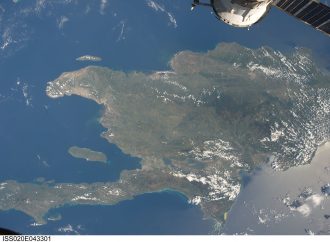A policy rethink on Canada’s Agenda 2030 commitments finally emerged as a feminist development manifesto from Canada’s Development Minister, Marie-Claude Bibeau. This feminist framework for Canadian aid is bold in its ambitions — some might call it revolutionary — but the implementational plan so far is rather thin. The focus on women and children picks
A policy rethink on Canada’s Agenda 2030 commitments finally emerged as a feminist development manifesto from Canada’s Development Minister, Marie-Claude Bibeau. This feminist framework for Canadian aid is bold in its ambitions — some might call it revolutionary — but the implementational plan so far is rather thin.
The focus on women and children picks up a role begun in the 1980s. But this new policy document is very limited in its discussion of the critical how Canadian development programming will be implemented in the poorest countries, which often have institutional capacity and governance challenges.
The policy’s unspoken role was to demonstrate “Canada is Back” to potential developing countries whose votes could boost Canada’s chances for a UN Security Council seat. However, unlike the new defence policy, this policy finds itself with no incremental funding.
The policy is built around six thematic areas: 1) gender equality and the empowerment of women and girls; 2) human dignity; 3) growth that works for everyone; 4) environment and climate action; 5) inclusive governance; and 6) peace and security. Preparing the policy involved an extensive consultation process outlined in “What Did We Hear?” However, it is less clear whether these many diverse inputs actually influenced the final product.
The framework’s gender vocabulary and approach builds upon 1980s Canadian International Development Agency (CIDA) work. However, its much-enhanced goals can only succeed if substantial gaps in Global Affairs Canada (GAC) skills, partnerships, and official development assistance (ODA) resources, can be speedily resolved.
The framework assumes programme delivery built around Canadian civil society organizations (CSOs). But fundamental social change cannot happen overnight, or in small doses, so effective delivery will require more than traditional community-scale CSO projects. GAC infrastructure needs to be rebuilt to lead this initiative in a sustained way.
Scaling up the feminist agenda is long overdue, but also best pursued longer-term. CSO-styled micro-projects must shift to country programming via long-term partnerships, often multi-donor, often using SWAPs (Sector-Wide Approaches). Tackling root causes in culture and customs will involve transformational changes in providing access for girls and their mothers to full-spectrum education and health services, including reproductive health.
Hints of plans to impose formal feminist conditionalities might sound good. But conditionality has a bitter history with developing countries and will not position Canada well. We need partnerships where equality and trust are central; Canada should not emulate outmoded IMF-style bullying.
The policy, very Canada-focused, fails to explore how co-operation, to be effective, requires a trusting relationship with recipient partners who have their own development agendas and leadership visions. The policy seems to assume that partners will just fall into line with Canada’s short-term small project approach, seemingly ignoring the centrality of country leadership as set out in the Paris Declaration on Aid Effectiveness.
The message of enhanced partnerships applies to all dimensions of Canada’s relations with the Global South. However, development co-operation is often the optimal entry point. After a decade of absence, Canada needs to re-earn its entry pass with longer-term economic and political relationships.
Minister Bibeau’s mandate letter focuses on “reducing poverty.” Logically then Canada should allocate the lion’s share of ODA funding — say 75% — to the world’s poorest — in UN-speak, the 48 least developed countries (LDCs). Surprisingly, the new policy includes no formal ODA target for LDCs, only a nebulous 50% of bilateral aid for Africa, ignoring Asia.
ODA for new feminist programming may be squeezed due to recent high-profile pledges to multilateral donors. Without the discipline of a priority list of countries set by Cabinet, scarce ODA could be diverted to commercial or political favourites. No list means lost effectiveness from predictability.
Is GAC itself ready to deliver? This new policy presents an opportunity to right-size our development co-operation after the lost Harper decade when many experienced professionals were down-sized and CIDA was absorbed into GAC. Canada is now in catch-up mode.
Today most donors, including once hesitant multilaterals like the World Bank, are sensitized to the gender dimension. Canada’s new flagship program will be one of several. To achieve a lead role, GAC must rebuild its weakened bilateral programming capabilities and achieve more discipline in managing scarce human and financial resources.
Canadian leadership means playing a direct role in programming, with professionally strong and empowered decentralized teams in key partner countries. That leadership role will require us to be effective and nimble, but also modest and diplomatic. Remember it is “Country — not Canada — in the driver’s seat.”
Critically GAC needs to re-build a cadre of confident, competent staff selected for development co-operation and in-country experience. It will need empowered directors and professional capabilities resident where we have substantive partners. Trusted, timely access to senior decision-makers of partner countries is key. Critically, development staff must have equal status and empowerment to their Foreign Service counterparts.
Effective change demands a management culture that fosters risk-taking. Conservative, risk-averse thinking should not impede enhanced decentralization. More HQ control equals less credibility with the partner country.
More development funding is key to delivering a feminist agenda and meeting our Agenda 2030 goals. Over fifteen billion dollars towards new jet fighters does not match the global security gain from a billion heathier women and children. The 2018 budget should include a best efforts pledge on Pearson’s 0.70% of GNI target. Canada should at least match Pierre Trudeau’s 1975 ODA peak of 0.54% by 2020. Our present dismal 0.26% does not even match Harper’s best of 0.34%.
With a new agenda, Canada’s development co-operation team needs to get its international and domestic image into shape. Africa still knows us by the trademark CIDA, buried under the Harper merger. Would “Development Canada” compactly fit the bill? An independent advisory panel of experienced development professionals reporting to the minister would be wise and would help engage Canadians in our global future. Finally, not least, policy coherence inside GAC needs to become a working reality, with a two-way flow of ideas and equal influence between its development, trade, and political teams.
This article summarizes a more detailed analysis published on 16 June 2017 by OpenCanada.









